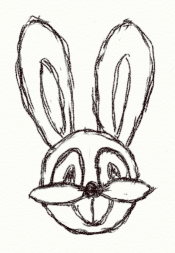Now the word PC is associated with relatively cheap boxes with Intel processor inside that run Windows or Linux. But PC actually means personal computer – a computer that is associated with one person that keeps all person’s data, applications and generally serves as a gate to the digital world. What actually makes it personal? Operating system? Hardware?
My first computer was Sinclair ZX Spectrum with 48k of memory. It was rather game console then computer because most of the programs were games but nonetheless it was open to modifications and has assembler translator to write ‘serious’ applications. You have to attach it to TV set and tape recorder so it was not portable. And thus it was not quite personal (except of emotional attachment) and it was easy to abandon when new generation of computers came. Next were x86 boxes with MS DOS and all flavours of Windows and Linux. There were no LCD displays or they were impossible to buy so these computers were desktops with CRTs and thus not portable too. But they were able to store much more data and run more applications. They began to accumulate digital part of me – documents, memos, music, picutes and all other kind of data bits. In this sense they become more ‘personal’.
Size matters; you can’t take desktop computer with you. It will stay at home or at work and you will come to it as you come to work or return home. Often there are two desktop computers – at work and at home. In the end none of them feels personal; just a temporary location. Only portable computer such as notebook may be truly personal because you take it with you wherever you go and it gets attached to you and becomes part of you. That’s what PC is.
Now many internet sites offer ‘web life’: store your data on their servers, use their applications (google.com, mac.com, box.net to name a few). While all this sounds new and exciting in reality this will work only partially. Do you know how they store your data? What if they will decide to cancel their service? What about privacy? I think of them as of backup solutions; I want my data to be with me, on my personal computer, easily accessible. And this won’t change anytime soon.
I’ve used many computers in my life; I’ve lived under many types of operating systems. In the end the winner is OSX running on MacBookPro. I can’t say that OSX is exceptionally stable; it’s just more convenient then others. Most applications may be installed just by dragging them in some folder on internal HD and uninstalled by dragging them in recycle bin. Behind the scenes OSX reads application bundle and updates launch services database, but user interaction with OS remains simple. There are other clever things and in the end combined together they make difference. MacBookPro is also not the most durable hardware but it’s thin, feels good and has nice display and sound system. It’s my choice now.
Technologies will evolve and there will be new gadgets but personal computers won’t go. Eventually you’ll need 15 inches thin display, keyboard and mouse. And disk space. And CPU power. And you’ll buy notebook, a truly personal computer.
Leave a Response »
